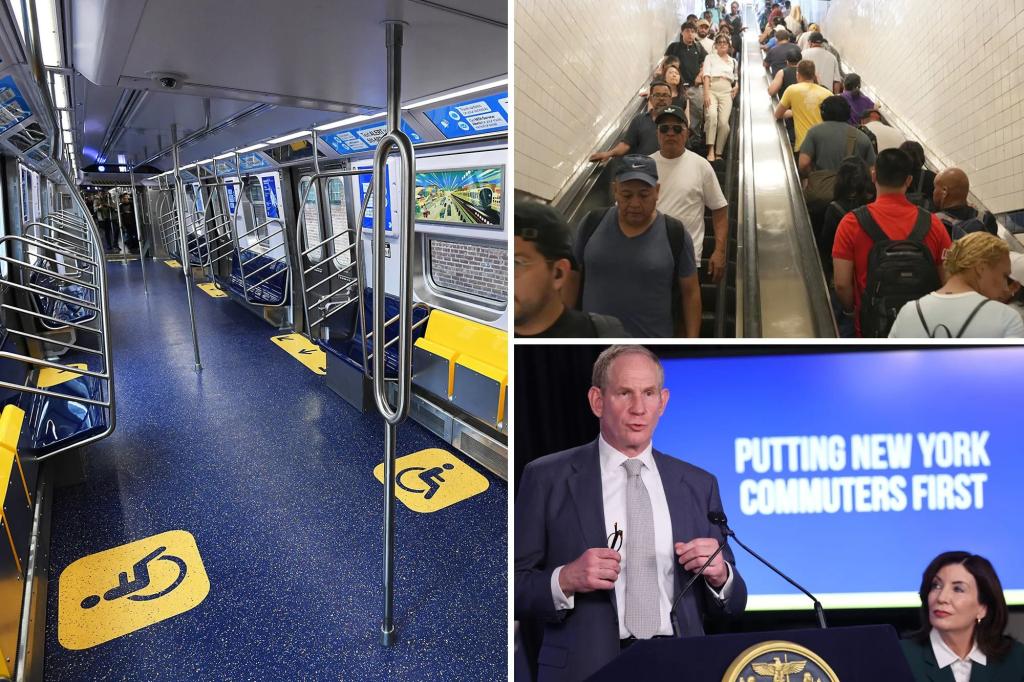The Metropolitan Transportation Authority (MTA) has ignited a firestorm of controversy by simultaneously announcing a $1.27 billion investment in new subway cars and a proposed fare hike to $3 per ride. While the MTA touts the new cars as a significant step towards modernization and improved service, critics view the concurrent fare increase as a blatant cash grab from already burdened commuters. This dual announcement comes on the heels of the impending congestion pricing plan for Manhattan, further exacerbating the financial strain on commuters. The MTA defends the fare hike by citing its affordability compared to other major global cities, but this argument has done little to quell the rising tide of public discontent.
The crux of the controversy lies in the perceived disconnect between the MTA’s spending habits and its justifications for the fare increase. Opponents point to the substantial cost of the new subway cars, questioning the MTA’s financial prudence and efficiency. Comparisons are being drawn to other transit systems, such as Chicago, which seemingly acquired a comparable number of cars at a significantly lower cost. The MTA’s reputation for mismanagement and wasteful spending further fuels the public’s skepticism about the necessity of the fare hike. Critics argue that the congestion pricing initiative, initially touted as a solution to capital shortfalls, has seemingly failed to alleviate the financial pressures on the MTA, leading to further burdens on commuters.
The proposed fare hike represents a significant increase from the current $2.90 fare and follows a pattern of incremental increases outlined in the MTA’s five-year plan. This plan also includes another 4% fare increase projected for 2027. These escalating costs, coupled with the looming congestion toll, which is set to begin at $9 and potentially rise to $15, are painting a bleak picture for commuters. Public outrage has been swift and vocal, with many accusing the MTA of prioritizing its own financial interests over the needs of the public. Critics contend that the MTA should focus on internal cost-cutting measures and address inefficiencies within its own operations rather than resorting to fare hikes.
The timing of these announcements has also drawn criticism. The impending congestion pricing plan, slated to take effect in January, will already impose a significant financial burden on drivers entering Manhattan. The concurrent announcement of a fare hike exacerbates the financial strain on commuters, regardless of their mode of transportation. This confluence of increased costs has intensified the public’s perception of the MTA as an entity disconnected from the realities faced by ordinary New Yorkers. The optics of investing in new subway cars while simultaneously increasing fares have further fueled accusations of misplaced priorities and a lack of genuine concern for the public’s financial well-being.
The political ramifications of these decisions remain uncertain. While public frustration is palpable, it is unclear whether this discontent will translate into tangible political consequences for elected officials, including Governor Kathy Hochul. Political analysts suggest that the link between MTA finances and the political fortunes of elected officials is often tenuous. While commuters are undoubtedly feeling the pinch, it’s debatable whether this will significantly influence voter behavior in upcoming elections. The long-term political fallout, if any, will likely depend on the effectiveness of the MTA’s justifications for the fare hike and the tangible improvements in service that the new subway cars deliver.
Despite the controversy, the MTA maintains that the investment in new subway cars is a crucial step towards modernizing the system and improving the overall commuter experience. The new R211 cars, including the “open-gangway” design, are touted as state-of-the-art, offering enhanced features such as wider doors, improved signage, digital displays, and enhanced security cameras. These features aim to improve accessibility, provide real-time information, and enhance passenger safety. The open-gangway design, in particular, is expected to improve passenger flow and increase train capacity. The MTA emphasizes that these investments are essential for long-term service reliability and a better commuting experience for New Yorkers. Whether these improvements will ultimately justify the fare hike in the eyes of the public remains to be seen.

